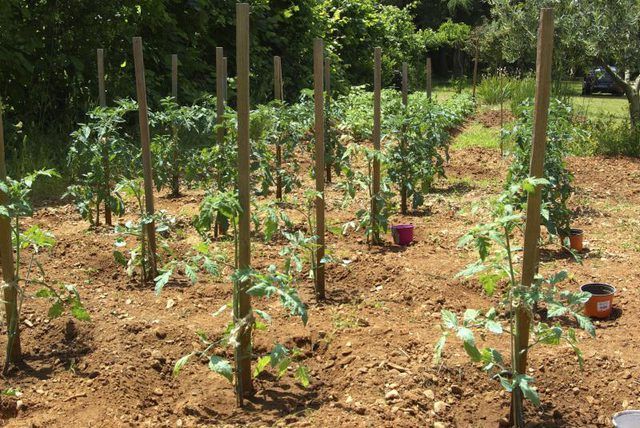Bulbs
Flower Basics
Flower Beds & Specialty Gardens
Flower Garden
Garden Furniture
Garden Gnomes
Garden Seeds
Garden Sheds
Garden Statues
Garden Tools & Supplies
Gardening Basics
Green & Organic
Groundcovers & Vines
Growing Annuals
Growing Basil
Growing Beans
Growing Berries
Growing Blueberries
Growing Cactus
Growing Corn
Growing Cotton
Growing Edibles
Growing Flowers
Growing Garlic
Growing Grapes
Growing Grass
Growing Herbs
Growing Jasmine
Growing Mint
Growing Mushrooms
Orchids
Growing Peanuts
Growing Perennials
Growing Plants
Growing Rosemary
Growing Roses
Growing Strawberries
Growing Sunflowers
Growing Thyme
Growing Tomatoes
Growing Tulips
Growing Vegetables
Herb Basics
Herb Garden
Indoor Growing
Landscaping Basics
Landscaping Patios
Landscaping Plants
Landscaping Shrubs
Landscaping Trees
Landscaping Walks & Pathways
Lawn Basics
Lawn Maintenance
Lawn Mowers
Lawn Ornaments
Lawn Planting
Lawn Tools
Outdoor Growing
Overall Landscape Planning
Pests, Weeds & Problems
Plant Basics
Rock Garden
Rose Garden
Shrubs
Soil
Specialty Gardens
Trees
Vegetable Garden
Yard Maintenance
How to Transplant Tomato Plants
How to Transplant Tomato Plants. Transplanting tomato plants (Lycopersicon esculentum) into **rich, moist, well-drained soil** provides good growing conditions for these tender fruiting plants. Perennial in U.S. Department of Agriculture plant hardiness zones 10 through 11, tomato plants are usually grown as annuals. Seed is sown indoors six to...

Transplanting tomato plants (Lycopersicon esculentum) into rich, moist, well-drained soil provides good growing conditions for these tender fruiting plants. Perennial in U.S. Department of Agriculture plant hardiness zones 10 through 11, tomato plants are usually grown as annuals. Seed is sown indoors six to eight weeks before the final average local frost date in areas that experience frosts, and seedlings are hardened off before transplanting outdoors. You can also buy older tomato plants at garden centers and nurseries.
Planting Time
The best time for transplanting tomato plants is when temperatures are continually well above freezing. These plants grow poorly and can develop disorders if exposed to cold air and soil. Transplant tomato plants when nighttime temperatures are consistently higher than 45 degrees Fahrenheit and daytime temperatures are higher than 60 degrees Fahrenheit.
Harden off tomato seedlings and plants raised indoors for one week before planting them outside. Water the plants only when the soil surface is dry to a depth of 1/2 inch, and don't apply fertilizer.
Soil Preparation
Soil high in organic matter promotes good growth in tomato plants. If your garden soil is poor or average, spread a 4-inch layer of rich garden compost or well-rotted manure over the planting site one week before transplanting your plants. Dig the organic matter into the soil to a depth of 8 inches with a garden fork.
Tomato plants produce the most fruit in soil with a pH of 6.0 to 6.8 but tolerate a soil pH as low as 5.5. Home soil test kits give the soil pH and advise how much sulfur or dolomitic lime to add to the soil to lower or raise its pH, according to the test results.
Tomato Plants
Tomato plants grow roots from their stems, and burying the stems to the lowest leaves provides large, healthy root systems. This applies to older plants as well as seedlings.
Dig a hole as deep as a tomato plant root ball and its stem to the lowest leaves, and twice as wide as the root ball. Place the plant in the hole. If transplanting tomato plant seedlings, handle them by their leaves, not their stems. Scoop the dug soil into the gaps around the plant until the hole is full. Lightly press the soil around the tomato plant stem to firm it in, and water the planting site thoroughly until the water puddles on the surface. Plant the other tomato plants in the same way.
Fertilizer and Water
Regular fertilizing and watering encourage strong growth in tomato plants. Fertilize newly transplanted tomato seedlings and older plants with a soluble fertilizer formulated for transplanted plants. Dilute the fertilizer at a rate of 1 teaspoon per 1/4 gallon of water, and apply the solution an hour or two after planting. Apply the solution again after two weeks, and again two weeks later. Manufacturers' instructions vary from product to product. Check the label and follow the advice.
Spread a 2-inch layer of compost, leaf mold or other organic mulch around the plants after transplanting to help conserve the soil moisture. Water the plants when the soil surface is dry. Pull back some mulch to check if you aren't sure.